Whether they are a young Marie Curie or Albert Einstein, a budding botanist, cuckoo for chemistry or simply looking for something new and exciting to read over the summer vacation, if there is one thing we know about our young Live Science readers, it’s that they love a good science book.
With the help of our sister magazine “How It Works,” we’ve pulled together some of the best science books for kids of all ages, which should keep their young minds fizzing with ideas long into the future.
To make things easier, we’ve grouped them into two sections: one featuring books for children under 10 years old, and the other books for older children and young adults. They are all books that have been released recently, but if there are any that you think we have missed then please let us know on social media (here’s where you can find us), or ping us an email at community@livescience.com.
Best science books for kids under 10 years old
Details
Author: Max Amato and Brendan McAuliffe
Illustrator: Nathan Reed
Publisher: Sourcebooks Explore
Price: Available on Amazon for $18.99
Release date: Oct. 1, 2024
In an immersive short story for young readers, the dinosaurs of the Cretaceous period are introduced through colorful cartoons and sounds. You will explore the world in this ancient era with newborn Triceratops Terri, as she encounters new species for the first time, too.
Each illustration enables the reader to visualise how every dinosaur would engage with its surroundings and — most importantly in “Stomp, Soar, Dino Roar“ — its echoing sounds. The text’s size, shape and design helps readers to recreate the style of each sound, and phonetic spellings break down the complicated dinosaur names beneath the main text.
Hear from dunking, water-loving dinosaurs and dueling competitors as the rhymes become an entertaining and fast-paced tour. At the end of “Stomp, Soar, Dino Roar,” you get more information about each dinosaur mentioned, with useful fact files and illustrations to show the size of each in comparison to a human. More thorough information about how we know what each dinosaur may have sounded like — through fossils and the analysis of living relatives — is included at the back of the book, as well as a timeline to visualise how long ago animals like Terri graced the Earth.
Read more: A brief history of dinosaurs
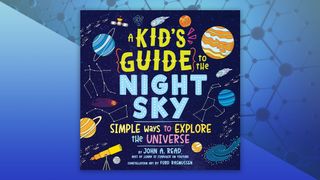
The night sky is filled with countless cosmic objects to explore and this book does its best to introduce a whole heap of them to the next generation of astronomers. From the little bear to the mighty dragon, there are many glinting constellations and bright stars to identify with the help of “A Kid’s Guide to the Night Sky.”
However, this book offers so much more for science-minded stargazers. The life cycle of stars, conjunctions and light pollution are just a few of the topics that his book introduces to its audience. It also takes a deep dive into each of the solar system’s planets and some of the amazing technology that’s working to find out more about them.
With so many constellations, satellites and comets to discover, this easy-to-follow guide offers helpful tips and tricks to make sense of what’s in space.
Read more: Best telescopes for beginners and advanced scopes for stars, galaxies and nebulas
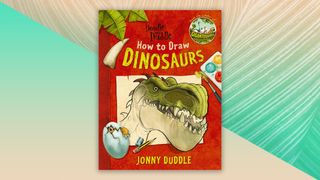
Would you like to be able to draw cartoon dinosaurs? Draw them really well? If you put in a lot of practice with the lessons that Jonny Duddle teaches, you could!
The author and illustrator of “How to Draw Dinosaurs” is a self-proclaimed “doodler,” which is a very modest way of saying he’s a cartoon artist — and a very good one, at that. Duddle begins to take the reader through his dinosaur-drawing methods by listing the basic equipment: “just a pencil to start,” although he does have his favorite tools of the trade that include a sketchbook and a ballpoint pen — not an advisable drawing implement for mistake-prone beginners.
He then introduces us to a quartet of his own, made-up dinosaur-like characters who assist in the lessons, and then readers get to start drawing some (mostly) real dinosaurs.
Duddle alternates between pages of dinosaur facts with finished dinosaur illustrations, and step-by-step lessons on how to draw them in his style. It’s often a case of building layers on top of a basic shape — such as the ellipse that forms the body of a diplodocus. The section on dinosaur skeletons, which includes a step-by-step illustration of how fossils form, is a particularly vibrant chapter that gives the budding artist a sense of the internal structure of a dinosaur and some shapes that they can start to build their own dinosaur drawings around.
Finally, for those who have advanced in their dino-doodling and have the confidence to go it alone, there’s space in the back of the book to draw their own fantasy dinosaur and a comic strip of their own doodles.
But even if the reader has no interest in trying any of Duddle’s drawing lessons, “How to Draw Dinosaurs” is a fun read for school-aged students, accompanied by captivating cartoon dinosaurs. At the very least, it’s a good drawing reference for a future school dinosaur project or art homework.
Related: If birds are dinosaurs, why aren’t they cold-blooded?
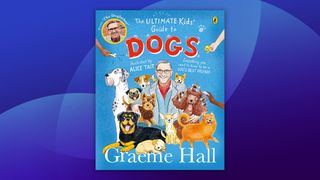
If you have a pet dog, or if you call yourself a “dog person,” this book is the ideal introduction to their history, biology, behaviour and communication. The author’s engaging style guides young readers through all aspects of this popular pet, from their animal ancestors to the emergence of dogs 14,200 years ago.
Across each page are vibrant illustrations showing uplifting scenes of human-dog interaction. The timeline details how dogs have been helping humans for thousands of years — how humans have mistreated them, but also how work has been carried out to keep dogs protected.
Throughout “The Ultimate Kids’ Guide to Dogs” you will learn about the many jobs dogs have been selectively bred for, as well as the biology and behaviors of different breeds in the dog fact files. If you have a new puppy in your family, this is the perfect way to get to know them better. A visual timeline of a dog’s growth details what to expect from your new best friend, while the body language guide will explain what your pet is trying to tell you.
“The Ultimate Kids’ Guide to Dogs” is a brilliant blend of information and interaction. After absorbing the facts, use the dog training guide to test new tricks on your dog and — at the end of the book — test your knowledge in the ultimate dog quiz.
Related: Do any animals keep pets like humans do?
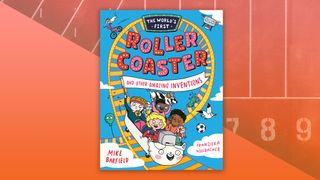
You can’t go far wrong with cool facts and funny comic strips, so author/illustrator dream team Mike Barfield and Franziska Höllbacher are off to a pretty good start with “The World’s First Rollercoaster and Other Amazing Inventions.” It charts the greatest inventions from the last century or so — but when we say “greatest,” we don’t necessarily mean the inventions that have significantly furthered our species.
Instead, fun inventions like the rollercoaster, the hamburger, skateboards and video games take precedence over the likes of electric vehicles and smartphones. This is where Mike and Franziska can have the most fun. There’s a full-page comic strip for every item on the contents page, giving a potted history of the people behind the invention and their world-famous ideas.
There’s a full-page comic strip for every item
ome of those ideas are a little more out-there — like the “invention” of the dog, which was domesticated over the course of the last 10,000 years or so, the history of which has been distilled into a single silly, yet informative, comic strip. But even the more conventional inventions have been injected with good humor and an interesting angle.
For instance, instead of telling us how Carl Friedrich Benz built the world’s first petrol-drive automobile in 1885, Barfield veers slightly off that course to talk about Benz’s wife, Bertha, who achieved her own world-firsts with Carl’s invention and without whom we wouldn’t even know the name “Benz” in the world of motoring.
If you want to learn more about that, you’ll just have to read the book — we promise you it’s well worth it. “The World’s First Rollercoaster and Other Amazing Inventions” is as amusing as it will be interesting to anyone of any age, and by the end you’ll be sure to have learned a thing or two about some of your favorite inventions.
Related: 32 weird technologies that never took off

It’s safe to say that children have never been more aware of the impact that climate change is having on the world — and with that awareness come countless questions about how families can play their part in protecting the planet. In this simple guide to sustainable living, children will learn about different climate challenges, as well as some of the small ways in which we can help reduce our negative impact on the environment.
Along with well-known concepts in sustainability such as “the five R’s” (reduce, reuse, recycle, repurpose and refuse), there are new ways of being greener to explore, such as “green fashion” and “smart eating.” Packed with helpful tips and advice, “Your Sustainable World” is sure to inspire children to make more environmentally friendly choices.
Related: 15 unexpected effects of climate change
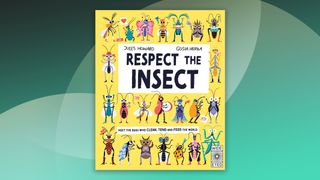
In this amusing, factual and engaging book, young readers are introduced to the insect world in a visual way, to help understand each creature’s importance.
Each insect is personified by a cartoon character who will explain their daily role in the environment. Let the critters welcome you into their home for a grand tour, detailing how they built their homes and some of the ways their actions are misunderstood.
From plastic problem-solving wax moth caterpillars to earth-moving termites and honey-making bees, each page will show you a new animal in action. One section reveals the prevalence of insects around the globe, from desert dwellers to the insects that need to live in conditions so cold that if you touched them, they would die from exposure to your body heat.
Wherever you live in the world, this book ensures that the next time you come across one of these species, you will have more respect for the insect.
Related: How do insects know which flowers have pollen?
Best science books for older children and young adults
Astrophysics for Supervillains
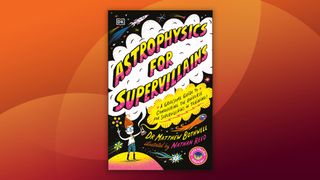
Taking plenty of cues from the bestselling “Horrible Histories” series, “Astrophysics for Supervillains” is a children’s book of space facts that moves space education beyond what a typical 9-year-old might learn in their classroom. And as long as there’s other stuff on the school curriculum, like English or Geography, there’s no chance of the teacher finding time to derail the learnings of a supervillain-in-training.
Author and astronomer Dr. Matt Bothwell steps up to the role of evil genius and takes us through six meaty chapters of space facts, from the relatively ordinary confines of our own solar system to the end of a star’s life, the heat death of the universe and, our favorite, “How to Destroy the Earth” — a list of the various cosmic fates to which Earth may finally succumb, however unlikely those might be.
Weaves around tough answers that might require an actual PhD to unpick
Every chapter can effectively be split into a series of questions that might typically be asked by a school student of a certain age, such as “How long could you survive on Pluto?”, “What is inside a black hole?” and “If the universe is growing, what is it expanding into?”. These questions are comprehensively answered by Dr. Bothwell in his best supervillain professor voice, reveling in the extreme dangers posed by the space beyond our little bubble of atmosphere, and the apocalyptic scenarios that we might encounter if we could travel millions of light years from Earth and live a few billion years or more.
Dr. Bothwell is the public astronomer at the University of Cambridge’s Institute of Astronomy, so engaging a school-age audience is all in a day’s work — and “Astrophysics for Supervillains” is no exception. It cleverly weaves around tough answers that might require an actual PhD to unpick, coupling them with plenty of cartoon illustrations and the kind of choice typography that makes a good comic strip.
All told, this is a really fun insight into the cosmos that could inspire future generations of astronomers.
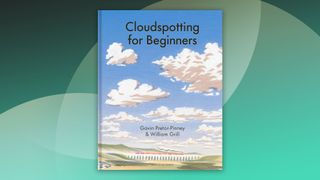
If the ever-changing sky and shape-shifting patterns of clouds have ever piqued your interest, this is the book for you. Those fluffy objects floating in the atmosphere are immensely complex, and each form of cloud has a specific classification, produces intriguing phenomena and exists only at favourable altitudes. “Cloudspotting for Beginners” introduces you to each type of cloud, often giving them a poetic personality to remember them by.
Just like the act of skywatching itself, reading this book has a calming effect, as each cloud type and phenomenon is presented with elegant sketches that beautifully capture the intricacies and moods of different skies. You will learn about the 10 main cloud types, positioned on the page at the altitudes where you can spot them. Artistic graphs detail the science of cloud formation, the anatomy of rainbows, halos formed by clouds’ crystals and the appearance of clouds on other planets.
How were clouds named, which weather pattern is each cloud type linked to and what clouds capture a sunset? The answers to all these questions and more are revealed in “Cloudspotting for Beginners.”
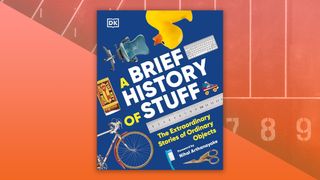
DK has selected a truly eclectic list of “stuff” for inclusion in this curiously put-together book. From baby bottles to ballpoint pens, there isn’t much of a logical path or timeline — which, oddly, is part of what makes it a brilliant reference for kids of all ages.
Casting your eye over the contents page and seeing a list of everyday items such as a thimble or a fridge magnet, you’re left realising there’s a gap in your knowledge about how all these things came to be. Luckily, “A Brief History of Stuff” has all the information you need about their origins and impact on society.
Packed with bitesize facts, before you know it you’ll be reciting the history of “stuff” to your friends and family.
Read more: 20 inventions that changed the world
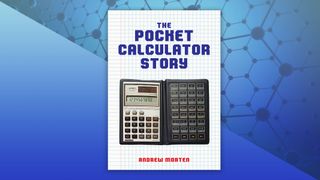
These days, calculators have mostly been relegated to a smartphone or desktop app. However, this piece of electronic math wizardry has a history that is long and varied, as will become abundantly clear to readers of “The Pocket Calculator Story.”
From the key invention of the transistor in the 1960s, you’ll follow the evolutionary journey of the humble pocket calculator and watch it transform into a feature-packed mini-computer, capable of making short work of complex equations. You’ll also discover the many weird and wonderful calculators that broke the mold, such as the calculator-pen hybrid, the credit card calculator and the iconic calculator watch that dominated the 1980s.
Offering a dose of tech nostalgia, this makes an excellent reference book for any personal electronics enthusiast.
Related: Best laptops for students 2024: Get the perfect laptop for college
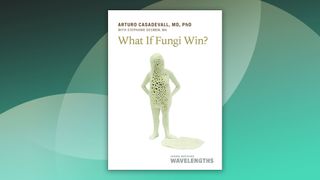
Arturo Casadevall is a professor of molecular microbiology and immunology at the Johns Hopkins School of Medicine, and the author of “What if Fungi Win?“ — an insightful look at how fungi facilitated evolution and benefited the global biome, but how they could also be the downfall of civilization.
Drawing on his own research and experience, Casadevall describes the fascinating biology behind fungi, including their amazing powers of radiation resistance and healing abilities. There’s an important cautionary tale in “What If Fungi Win?”, too: In a post-Covid world, Casadevall shares the importance of tackling infectious fungi and warns about the rise of drug-resistant species.
By the time you’ve finished this fascinating and eye-opening book, you’ll surely have gained a new appreciation for fungi — along with a cautious side-eye.
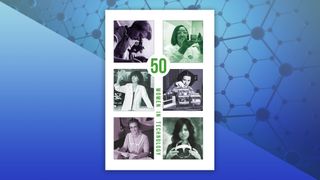
Details
Author: Georgina Ferry, Inês Nobre de Almeida and Bridget Greenwood
Publisher: Supernova Books
Price: Available on Amazon for $29.99
Release date: Out now
In a celebration of the female pioneers that have helped advance technology throughout history, “50 Women in Technology” is sure to inspire the next generation of brilliant scientists. Along with some of the more recognisable names such as Katherine Johnson or Marie Curie, there are many unsung heroes of science to discover, such as Vera Rubin, whose work led to the discovery of dark matter.
In part, this reference book acts as a reminder of the great women whose work paved the way for modern minds. For example, Stephanie Willerth, a professor at the University of Victoria in Canada, oversees research to engineer treatments for central nervous system disorders, while data scientist Rumman Chowdhury is tackling solutions for ethical artificial intelligence. These are just some of the minds that you’ll meet through a series of interview-based biographies that reveal the motivations of women who are making strides in technology.
Related: 25 amazing women in science and math
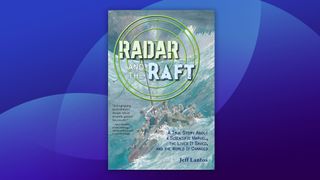
The story of radar, its inventors and contributing scientists are combined in this true story about the technology’s emergence and lifesaving uses. Written for readers around the ages of 10 to 13, “Radar and the Raft” is for those with an interest in history and technology.
Unlike many technology-based non-fiction books, this story largely focuses on the people and families behind the technology, as well as life during World War II. The book includes a combination of character storylines and multiple scientific discoveries, intriguing the reader as to how they will connect together. Toward the end of the book, these stories and inventions meet in a dramatic scene that demonstrates the lifesaving potential of science.
Grips readers through both personal stories and the evolution of technology
“Radar and the Raft” grips readers through both personal stories and the evolution of technology. By connecting the story of the Bell family’s near-death experience at sea during World War II with the story of radar’s discovery, the author has produced an engaging and informative storyline. This is a great read that explores the direct consequences of scientific discoveries.
Read more: How radar works: The technology made famous by war












/https://tf-cmsv2-smithsonianmag-media.s3.amazonaws.com/filer_public/d1/82/d18228f6-d319-4525-bb18-78b829f0791f/mammalevolution_web.jpg)







Discussion about this post